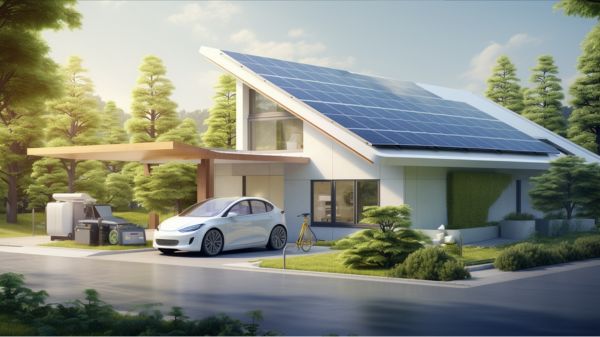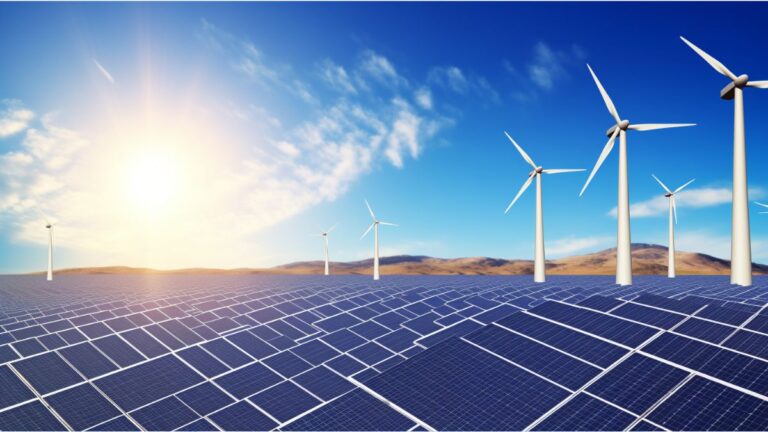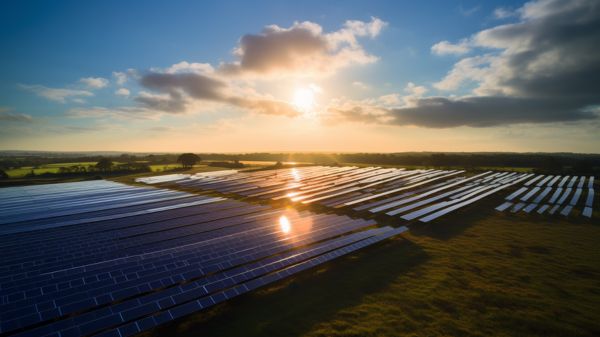15 Key Criticisms of Green Energy Government Policies
Are you curious about the potential downsides of green energy government policies? Look no further!
In this article, we will delve into 15 key criticisms that shed light on the effectiveness, infrastructure support, and economic impact of these policies.
By analyzing the lack of long-term planning, inadequate support for energy storage, and unfavorable market conditions for investors, we aim to provide an objective and informative perspective on the challenges faced by green energy initiatives.
Lack of Cost-Effectiveness
One major criticism of green energy government policies is that they often fall short in delivering cost-effective solutions for consumers. Critics argue that while the goal of promoting renewable energy is commendable, the cost effectiveness analysis of such policies is often lacking.
The implementation of renewable energy incentives, such as tax credits and subsidies, is meant to encourage consumers to adopt green technologies. However, some argue that these incentives don’t effectively address the high upfront costs associated with renewable energy systems. Additionally, the long-term savings anticipated from green energy may not always materialize as expected.
As a result, consumers may be hesitant to invest in renewable energy solutions due to the perceived lack of cost effectiveness. It’s essential for policymakers to carefully evaluate the economic viability of green energy government policies to ensure that they provide tangible benefits for consumers.
Inadequate Infrastructure Support
To fully address the lack of cost-effectiveness in green energy government policies, another key criticism is the inadequate support for infrastructure development. Limited funding and technological limitations have hindered the progress of green energy infrastructure.
The transition to renewable energy sources requires significant investments in upgrading existing infrastructure and building new ones. However, governments often allocate limited funding for such projects, making it challenging to develop the necessary infrastructure at the required pace.
Moreover, technological limitations pose additional obstacles. Green energy technologies, such as solar and wind power, require specific infrastructure, such as solar panels and wind turbines, to be installed and integrated into the existing grid. However, the lack of adequate infrastructure support hampers the adoption and integration of these technologies, leading to delays and inefficiencies.
Addressing these infrastructure limitations is crucial for the successful implementation of green energy policies.
Unreliable Energy Supply
When it comes to the issue of unreliable energy supply, there are several key points to consider.
Firstly, the energy grid instability poses a significant challenge as it struggles to handle the fluctuating power generated by green energy sources. This can lead to disruptions and blackouts, impacting the reliability of the energy supply.
Additionally, the intermittent power availability and inconsistent energy production of renewable sources further contribute to the unreliability of the overall energy supply.
Energy Grid Instability
You can experience energy grid instability due to an unreliable energy supply. This is a significant concern associated with the integration of renewable energy sources into the existing energy grid.
Here are three reasons why energy grid instability can occur:
- Intermittent Nature of Renewable Energy: Renewable energy sources like solar and wind are dependent on weather conditions, resulting in fluctuations in power generation. This can lead to imbalances in supply and demand, causing grid instability.
- Lack of Grid Modernization: The current energy grid infrastructure may not be equipped to handle the variability and unpredictability of renewable energy sources. Without proper grid modernization, the grid may struggle to accommodate the integration of green energy, leading to instability.
- Inadequate Energy Storage: Energy storage technologies play a crucial role in compensating for the intermittent nature of renewable energy. Insufficient energy storage capacity can result in a lack of backup power during low generation periods, contributing to grid instability.
Addressing these challenges requires investment in grid modernization and the development of robust energy storage systems. This will ensure a reliable and stable energy supply as we transition to a greener future.
Intermittent Power Availability
As you delve into the topic of intermittent power availability, it’s crucial to consider the challenges that arise due to an unreliable energy supply.
One of the major criticisms of green energy government policies is the issue of integrating renewable energy sources into the existing power grid. Unlike traditional energy sources, such as coal or natural gas, renewable energy is highly dependent on environmental conditions such as sunlight and wind. This variability in energy production can lead to fluctuations in power availability, which poses a significant challenge for maintaining power grid stability.
The intermittent nature of renewable energy sources requires careful planning and coordination to ensure a consistent and reliable energy supply. Critics argue that the unreliability of intermittent power availability is a major drawback of green energy policies and can negatively impact the overall reliability and stability of the power grid.
Inconsistent Energy Production
One major concern with green energy government policies is the inconsistency in energy production, which can result in an unreliable energy supply. This inconsistency arises from the incomplete energy generation and fluctuating energy output of renewable sources such as solar and wind power.
Here are three key reasons why this inconsistency poses a challenge:
- Weather dependency: Renewable sources heavily rely on weather conditions, making them susceptible to variations in sunlight and wind patterns. When the weather is unfavorable, energy production can significantly decrease, leading to a shortage in supply.
- Storage limitations: Unlike traditional energy sources, green energy often lacks efficient storage solutions. This means that excess energy generated during peak times can’t be effectively stored and utilized during periods of low production, causing an imbalance in supply.
- Grid instability: The intermittent nature of renewable energy can strain power grids, as they need to constantly adapt to the fluctuating energy output. This can result in power disruptions and blackouts if the grid is unable to handle the variability in supply.
Addressing these challenges is crucial to ensure a reliable and consistent energy supply from green sources.
Inefficient Use of Taxpayer Funds
When it comes to green energy government policies, one of the key criticisms is the inefficient use of taxpayer funds. Critics argue that there’s often a waste of taxpayer money due to ineffective allocation of funds.
This means that the funds intended for promoting and supporting green energy initiatives may not be utilized in the most efficient and effective manner, leading to a lack of tangible results and a poor return on investment for taxpayers.
Wasted Taxpayer Money
You may find that a significant amount of taxpayer money is being wasted due to the inefficient use of funds in green energy government policies. This is primarily attributed to cost overruns and a lack of transparency in the allocation of funds.
Here are three key points to consider:
- Cost overruns: Green energy projects often exceed their initial budget estimates, resulting in significant financial losses. This can be attributed to poor planning, inadequate project management, and unforeseen technical challenges. These cost overruns not only waste taxpayer money but also hinder the progress of renewable energy initiatives.
- Lack of transparency: The lack of transparency in the allocation of taxpayer funds for green energy projects raises concerns about accountability and efficiency. Without proper oversight and reporting mechanisms, it becomes difficult to determine whether the funds are being utilized effectively. This lack of transparency fosters an environment where inefficiencies and wasteful practices can persist.
- Inefficient use of funds: In some cases, taxpayer money allocated for green energy projects isn’t utilized optimally. This could be due to poor project execution, mismanagement, or inadequate monitoring of the projects’ progress. As a result, valuable resources are squandered, impeding the transition to a cleaner and more sustainable energy future.
It is crucial for governments to address these issues and ensure that taxpayer funds are utilized efficiently and transparently in green energy policies.
Ineffective Allocation of Funds
Continuing from the previous subtopic, let’s delve into the ineffective allocation of funds in green energy government policies.
One major criticism is the occurrence of cost overruns and project delays. When it comes to funding green energy projects, governments often face challenges in accurately estimating the costs and timelines involved. This can result in projects exceeding their initial budgets and experiencing delays in completion.
Such cost overruns and project delays not only waste taxpayer money but also hinder the overall effectiveness of green energy initiatives. Inefficient allocation of funds can lead to a mismanagement of resources and a failure to achieve the desired outcomes.
It’s crucial for governments to improve their planning and budgeting processes to ensure the efficient use of taxpayer funds in green energy projects.
Negative Economic Impact
Have green energy government policies had a detrimental effect on the economy?
While green energy policies aim to promote sustainability and reduce carbon emissions, they’ve faced criticism for their negative economic impact. Here are three key points to consider:
- Job losses: The transition to green energy often involves shutting down traditional industries such as coal mining or oil refining. This can lead to job losses in these sectors and negative public opinion among affected communities.
- Increased costs: Green energy initiatives require significant investments in infrastructure and technology, which can result in higher energy prices for consumers. This can have a negative impact on local businesses and households, particularly those with limited financial resources.
- Disruption of local economies: Green energy projects, such as wind farms or solar installations, may disrupt local communities by occupying large areas of land and potentially affecting property values. This can have long-lasting effects on the economic stability of these areas.
While green energy policies aim to address environmental challenges, it’s important to carefully consider their potential negative economic consequences and work towards finding a balance that benefits both the environment and the economy.
Job Losses in Traditional Energy Sectors
When evaluating the impact of green energy government policies, one key criticism is the potential job losses in traditional energy sectors. As the transition to renewable sources of energy accelerates, industries like coal and oil may face significant downsizing, leading to unemployment for workers in these sectors.
However, it’s important to consider that this transition also presents opportunities for re-training and employment in the growing renewable energy industry. Government support and investment in affected industries can help mitigate the negative economic impact and facilitate a smoother transition for workers.
Economic Impact of Transition
By transitioning to green energy, you risk exacerbating job losses in traditional energy sectors. While the move towards renewable sources of energy has its benefits, it’s important to consider the potential negative economic impact on industries heavily reliant on fossil fuels. Here are three key points to consider:
- Job losses: The transition to green energy could result in significant job losses in traditional energy sectors such as coal mining and oil drilling. These industries employ a large number of workers, and a sudden shift towards renewable energy could lead to unemployment and economic instability in these regions.
- Job creation: While job losses are a concern, it’s vital to acknowledge that the green energy sector also presents opportunities for job creation. As the demand for renewable energy increases, there will be a need for skilled workers in areas such as solar panel installation, wind turbine maintenance, and energy efficiency consulting.
- Environmental impact: The shift towards green energy is driven by the need to reduce greenhouse gas emissions and mitigate climate change. While job losses in traditional energy sectors may be a short-term consequence, the long-term environmental benefits are significant. Investing in renewable energy can help combat global warming and create a more sustainable future.
It is crucial for policymakers to implement transition plans that prioritize job retraining and provide support for workers affected by the shift towards green energy.
Re-Training Opportunities for Workers
You can often find re-training opportunities for workers who’ve experienced job losses in traditional energy sectors due to the transition to green energy. As the demand for renewable energy grows, governments and organizations recognize the need to support workers in transitioning to new industries.
Re-training programs aim to equip workers with the skills and knowledge needed to succeed in green energy sectors. These programs can vary in duration and focus, ranging from short-term courses on specific renewable technologies to comprehensive programs that provide a broader understanding of the industry.
Additionally, job creation initiatives are often implemented alongside re-training programs to ensure that there are sufficient employment opportunities for workers in the green energy sector.
Government Support for Affected Industries
One way governments can address job losses in traditional energy sectors is by providing support to affected industries. This government aid can help these industries transition to cleaner and more sustainable practices while minimizing the impact on workers. Here are three ways that government support can be beneficial in this process:
- Financial assistance: Governments can offer financial incentives and grants to help affected industries invest in renewable energy technologies and infrastructure. This can help create new job opportunities and stimulate economic growth in the emerging green energy sector.
- Retraining programs: Government support can include funding for retraining programs to help workers in traditional energy sectors acquire the skills needed for jobs in the renewable energy industry. This can help mitigate the impact of job losses and ensure a smoother transition for affected workers.
- Job placement services: Governments can establish job placement services to connect displaced workers with new employment opportunities in the green energy sector. These services can provide job search assistance, career counseling, and training support to help workers find suitable employment in the industry transition.
Inconsistencies in Energy Policies
Despite the push for renewable energy, inconsistencies within government energy policies remain a significant concern.
One of the main issues is the inconsistencies in policy implementation. While many countries have set renewable energy targets and implemented policies to promote their achievement, the actual implementation of these policies often falls short. This can be attributed to a lack of regulatory oversight. Without proper monitoring and enforcement, policies can be easily undermined or ignored, leading to a gap between intended goals and actual outcomes.
Furthermore, inconsistencies in policy implementation can create uncertainty for investors and industry stakeholders, making it difficult to plan and invest in renewable energy projects.
To address these issues, governments need to establish robust regulatory frameworks and ensure effective oversight to ensure consistent and transparent policy implementation.
Insufficient Research and Development
To address the issue of inconsistencies in policy implementation, governments must prioritize sufficient research and development in the green energy sector. Without adequate research, it becomes difficult to determine the effectiveness of various green energy technologies and their impact on the environment. Moreover, the lack of development funding hampers the progress in implementing sustainable and efficient energy solutions.
To overcome these challenges, governments should focus on the following:
- Investing in research: Governments should allocate resources towards research efforts that aim to improve green energy technologies and make them more efficient and affordable. This will help in identifying the most effective solutions for transitioning to a greener and more sustainable energy system.
- Supporting innovation: Governments should provide funding and incentives for research institutions and private companies to develop innovative green energy technologies. This will encourage the development of new and improved solutions that can address specific energy needs and challenges.
- Collaborating with the private sector: Governments should forge partnerships with private companies to leverage their expertise and resources in research and development. This collaboration won’t only help in accelerating the pace of innovation but also ensure that the developed technologies are commercially viable and can be scaled up for widespread adoption.
Environmental Concerns and Risks
Addressing the issue of insufficient research and development in the green energy sector, you must now consider the environmental concerns and risks associated with government policies.
While green energy is often touted as a solution to mitigate climate change and reduce carbon emissions, there are valid concerns regarding its environmental impact. One major concern is the potential harm to wildlife habitats and ecosystems caused by the construction and operation of renewable energy infrastructure. Wind turbines, for example, can pose a threat to birds and bats. Additionally, the production and disposal of solar panels and batteries can have negative effects on the environment.
Another crucial aspect to consider is public health. Some studies suggest that living near wind turbines can lead to sleep disturbances and other health issues. Furthermore, improper waste management in the green energy sector can result in environmental pollution and health hazards.
It’s important for government policies to address these environmental concerns and mitigate the potential risks associated with green energy implementation.
Excessive Reliance on Subsidies
Excessive reliance on subsidies in green energy government policies presents several key criticisms.
Firstly, the economic burden of subsidies can be significant, as they require substantial financial resources from the government and taxpayers.
Secondly, subsidies can distort market incentives, potentially hindering innovation and competition in the renewable energy sector.
Lastly, relying heavily on subsidies for an extended period may prove to be unsustainable in the long-term, as it may create dependency and hinder the development of cost-effective, market-driven solutions.
Economic Burden of Subsidies
You often hear critics argue that relying excessively on subsidies for green energy creates an economic burden. While subsidies are meant to promote the growth of renewable energy sources, they can have unintended consequences on the overall economy. Here are three key points to consider:
- Reduction of subsidies: Critics argue that reducing subsidies for green energy would help alleviate the economic burden. They believe that the government should gradually decrease the amount of financial support provided to the renewable energy sector, allowing it to become more self-sustainable.
- Impact on energy prices: Critics argue that excessive reliance on subsidies can lead to higher energy prices for consumers. Subsidies often require significant amounts of public funding, which can result in increased taxes or utility bills. This can place a strain on individuals and businesses, particularly those with limited financial resources.
- Market distortion: Critics also point out that excessive reliance on subsidies can distort the energy market. When renewable energy sources receive more financial support than fossil fuels, it can create an uneven playing field. This can hinder the growth of other energy sectors, potentially impacting job creation and overall economic development.
While subsidies play a crucial role in promoting green energy, critics argue that reducing their reliance and carefully managing their impact is necessary to prevent an economic burden on society.
Distorted Market Incentives
Subsidies for green energy can lead to distorted market incentives. While these subsidies are intended to promote the adoption of renewable energy sources, they can create an imbalance in the market by favoring specific technologies or companies. This can result in market distortion, where certain players benefit disproportionately, while others struggle to compete.
Excessive reliance on subsidies can also undermine the effectiveness of government policies. When renewable energy technologies receive significant financial support, it can reduce the incentive for innovation and cost reduction. Without the pressure to compete in a free market, companies may become complacent, hindering progress in the industry.
To address this issue, policymakers need to carefully consider the design of subsidy programs. They should aim to create a level playing field, ensuring fair competition among all renewable energy technologies. Additionally, gradually phasing out subsidies as technologies mature can encourage innovation and efficiency, while still supporting the initial development and deployment of green energy solutions.
Unsustainable Long-Term Support
Continuing the discussion on the distorted market incentives caused by subsidies, an unsustainable long-term reliance on financial support can hinder the progress of green energy policies. While subsidies initially provide a boost to the renewable energy sector, excessive and prolonged reliance on them can have negative consequences.
Here are three reasons why an excessive reliance on subsidies is unsustainable in the long run:
- Financial burden: Governments that heavily subsidize renewable technology may struggle to sustain the financial burden over time. As subsidies are funded by taxpayer money, the cost of supporting renewable energy can become unsustainable, diverting resources from other essential sectors.
- Market distortion: Excessive reliance on subsidies can create an artificial market for renewable energy, distorting the true cost and demand. This can lead to inefficiencies and misallocation of resources, hindering the development of a competitive and dynamic green energy market.
- Inhibiting innovation: Overreliance on subsidies can stifle innovation in the renewable energy sector. When companies become accustomed to receiving subsidies, they may lack the incentive to invest in research and development, limiting technological advancements.
While subsidies can play a crucial role in jump-starting the adoption of renewable energy, a sustainable approach that encourages market competition and innovation is essential for long-term success.
Limited Grid Integration
One major challenge facing green energy government policies is the limited integration of renewable energy sources into the existing grid infrastructure.
While renewable energy technologies have made significant advancements in recent years, the grid infrastructure has struggled to keep up with the pace of change.
The existing grid was primarily designed to accommodate fossil fuel-based power generation, and as a result, it lacks the necessary infrastructure to efficiently integrate and distribute renewable energy.
To address this issue, grid modernization efforts are needed to upgrade and expand the grid infrastructure, ensuring that it can effectively handle the increasing penetration of renewable energy sources.
This includes implementing advanced technologies, such as smart grids and energy storage systems, to manage the intermittent nature of renewable energy generation and enhance grid stability.
Lack of Long-Term Planning
To effectively address the limited grid integration of renewable energy sources, governments must prioritize long-term planning to ensure the necessary infrastructure and policies are in place. Strategic planning is crucial for green energy government policies to have a lasting impact. Here are three key reasons why long-term planning is essential for the success of these policies:
- Long-term goals: By setting long-term goals, governments can provide clear direction for the development of renewable energy sources. This allows for consistent investment and encourages technological advancements in the industry.
- Infrastructure development: Long-term planning enables governments to identify and address the infrastructure needs for renewable energy integration. This includes upgrading transmission and distribution networks and implementing energy storage solutions.
- Policy stability: Long-term planning provides stability for investors and industry stakeholders. When policies are consistently aligned with long-term goals, it fosters confidence in the market and encourages long-term investments in renewable energy projects.
Inadequate Support for Energy Storage
Lack of adequate support for energy storage remains a significant criticism of green energy government policies. While renewable energy sources like solar and wind have made significant advancements, the implementation of energy storage technologies has lagged behind.
Energy storage is crucial for enabling the consistent supply of renewable energy, as it allows excess energy to be stored and used during periods of low renewable generation. However, government regulations haven’t provided sufficient incentives for the development and deployment of energy storage systems. Without proper support, the cost of energy storage remains high, making it less attractive for investors and hindering its widespread adoption.
To address this issue, governments should establish favorable policies and financial incentives to encourage investment in energy storage technologies and promote their integration with renewable energy sources. This wouldn’t only enhance the reliability and resilience of green energy systems but also contribute to the overall decarbonization of the energy sector.
Unfavorable Market Conditions for Investors
Furthermore, you may encounter unfavorable market conditions for investors due to the inadequate support for energy storage in green energy government policies. These unfavorable conditions can be attributed to a couple of key factors:
- Unpredictable returns: Without proper energy storage infrastructure, green energy projects may face challenges in generating consistent and reliable returns. The intermittent nature of renewable energy sources, such as solar and wind, can lead to fluctuations in energy generation, making it difficult for investors to predict the financial viability of their investments.
- Regulatory uncertainties: Green energy government policies often lack clear and consistent regulations, creating a sense of ambiguity for investors. This uncertainty can deter potential investors from entering the market, as they may be concerned about the long-term stability and profitability of their investments.
- Limited access to financing: Inadequate support for energy storage in government policies can also limit access to financing options for green energy projects. Investors may struggle to secure the necessary funds to develop and scale their projects, further hindering their ability to navigate the challenging market conditions.
In order to attract more investors and promote the growth of green energy, it’s crucial for governments to address these issues and provide a stable and supportive market environment.
Inequitable Distribution of Benefits
You may experience an unequal distribution of benefits in green energy government policies. One key criticism of these policies is the inequality of benefits they create.
While the intention behind promoting green energy is to mitigate climate change and promote sustainability, the social impact of these policies can be unevenly distributed. Certain groups or regions may benefit more from incentives and subsidies, while others may be left behind.
This can create disparities in access to affordable renewable energy, job opportunities, and economic growth. The inequitable distribution of benefits can exacerbate existing social inequalities and widen the gap between the haves and the have-nots.
It’s crucial for policymakers to address these issues and ensure that green energy policies are designed to benefit all members of society, regardless of their socioeconomic status or geographic location.
Conclusion
In conclusion, while green energy government policies have been implemented with good intentions, they face several key criticisms. These include lack of cost-effectiveness, inadequate infrastructure support, and unreliable energy supply.
Furthermore, inefficient use of taxpayer funds and negative economic impact have raised concerns. It’s imperative for policymakers to address these issues and ensure long-term planning, adequate support for energy storage, and favorable market conditions for investors.
Only then can we achieve a truly equitable distribution of benefits. It’s clear that the road to a sustainable future is paved with challenges, but with determination and innovation, we can overcome them.






